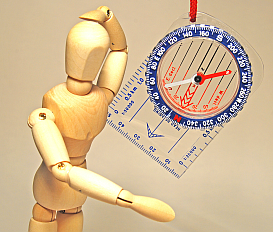 I’ve recently finished book called “Do It Tomorrow and Other Secrets of Time Management” by Mark Forster. It’s about efficiency, productivity and creativity – you know, the usual stuff I read. But I actually enjoyed this book more than usual.
I’ve recently finished book called “Do It Tomorrow and Other Secrets of Time Management” by Mark Forster. It’s about efficiency, productivity and creativity – you know, the usual stuff I read. But I actually enjoyed this book more than usual.
The book talks about 7 principles, and I see a common theme between the principles. It’s the question What are you NOT going to do? (By the way, the word “decision” originally means “to cut off from”. So – are you decisive?)
I think that Mark Forster is brilliant; a true time management veteran with a lot of experience under his belt. Some of the ideas and principles he presents are truly eye-opening. It’s so easy to forget them – or worse, never realize them.
Because the book doesn’t present a coherent productivity system (Such as GTD or One Minute To-Do List), it can help you even if you are already organized or use some organizing system.
It is mainly a collection of principles and concepts that you can use to improve your efficiency and creativity, and make your output more predictable and streamlined.
In this post, I am going to summarize the 7 main principles presented in the Do It Tomorrow and provide additional insights of my own.
#1 Commitment vs. Interests
We can have many interests (e.g. writing), but only a fairly limited amount of commitments (e.g. getting a regular column published in a local newspaper).
Was Beethoven interested in music?
Was Einstein interested in physics?
Was Bill Gates interested in software?
Was Abraham Lincoln interested in politics?
You get the idea.
Most people have many interests, often conflicting. That’s because they have no clear vision.
If you are committed to something, it means excluding everything else that might conflict with that commitment. So, by definition, we can have only a very small amount of commitments. Commitments are the deciding factor when it comes to success in your personal and work life.
Whenever you are thinking about starting something, you also must think about stopping something else.
Do many things badly, or be excellent at a few things.
#2 Have a Clear Vision
Good vision includes what you are not going to do.
Our vision should bring us clarity and focus. Far too often, vision statements act as smokescreens – don’t make that mistake! Just ask yourself: “What am I actually trying to achieve?” Make it sharp and narrow.
#3 One Thing at a Time
It is well known that multi-tasking diminishes your productivity, but the same goes for being committed to too many projects.
It is best to focus on one thing, finish it, and then go to the next thing.
We tend to think that unsuccessful people sit on their butts and do nothing, but the opposite is often true – they do so many things that they never properly finish anything. Ever heard the term “Serial entrepreneur”? These are entrepreneurs that build a series of successful businesses – and they do it one at a time.
As Steve Jobs said: “Real artists ship”. So be a real artist.
#4 Little and Often
Whenever you are tackling a large task or project, it is best to work on it in smaller chunks, but often. This applies to learning a foreign language, learning to play a musical instrument, exercise, and many other things. Our mind is the most effective when it has the time to properly incubate and develop the project. Forcing yourself to do large things in one sitting builds resistance and diminishes your creativity. Great ideas often come from sub-conscious, and take time to incubate.
And, of course, the key here is consistency. Once you commit to a project, put the effort in with religious consistency. Every day is best.
#5 Define your Limits
Counter-intuitively, we are the most creative when we are limited. In the book “Made to Stick”, many examples of this principle were presented. For example, try to think of 5 white things that you have at home. Then try to think 5 white things that you have in your fridge. For most, the latter is easier, yet it is more limited.
It is the limitations that encourage creativity.
What this means to you is that you should have very clear boundaries between your projects, both personal and work related. Once again, decide what you are not going to do.
Having no focus and no boundaries is a deceptive illusion of freedom that goes nowhere.
This is also the reason why working on a particular task in a strictly defined time burst works (Pomodoro).
#6 Closed Lists
Closed list is a list with a line drawn at the bottom, so nothing can be added to it. It is the opposite of open list, which grows endlessly.
It is easier to work with closed lists for multiple reasons. First, it’s motivating – the closed list can get only shorter, but open lists gets longer. Second, it acts as a buffer between you and new incoming work. It enables you to properly plan your work and then execute it without being distracted with new things. Closed lists reduce randomness.
One example of closed list is dealing with email in batches at specified times of the day, rather than dealing with it randomly during the day. Another example of closed list is a checklist.
When you create a to-do list, it always tends to get longer, because you will put the new incoming tasks to it. The idea of Do It Tomorrow, however, is to close the list – and do all the new incoming things the next day – tomorrow. Hence the name of the book – “Do It Tomorrow“.
Closed lists are a very effective tool for clearing backlogs: You can just seal your to-do list and isolate it as a backlog, then start completely anew. First, make sure you handle all the new incoming tasks, and second, slowly work through your backlog, which is now a closed list. Because it is a closed list, it will eventually grow to zero and you will clear it.
#7 Reduce Random Factors
Interruptions are the number one reason for preventing people to complete their work. Today, it is truer than ever.
While we probably can’t completely eliminate random distractions and interruptions, we can (and should) minimize them.
By the way, Eben Pagan, who is an extremely successful internet marketer and businessman, said that eliminating distractions might be the most important business skill of all – and his entrepreneurial training programs cover hundreds of skills! So this is definitely something to think about. (And if you want to learn how to focus, check out my post Are You a Zen Coder or Distraction-Junkie?).
With the right approach, you can be proactive, not reactive.
Do you run your day, or does it run you?
- By Jiri Novotny+, the obsessed author of task management software for Windows, Swift To-Do List. Jiri’s life quest is to become productivity and achievement world-class expert to empower others. His current main goal is to create the best task and notes organizer for Windows.
PS: If you could use task and notes organizer for Windows, then definitely download free 30-day trial version of Swift To-Do List Jiri has been working on for over 7 years now. You will be amazed.


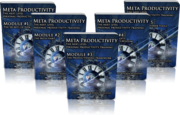
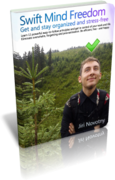
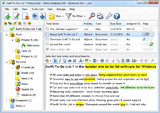
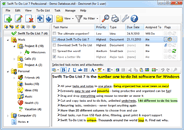
Impressive and easy to work with. Question? can i install on 2 computers IE: Desktop and Laptop! do i need two license keys? Can you sync the two computers? and how?
Hi Chuck,
I am glad that you like Swift To-Do List!
1) Yes, you can install it on 2 computers. You need the 1-user-3-PC-Pack license which has been designed specifically for this. It costs less than 3 licenses – it even costs less than 2 full licenses. In fact, the price is equal to just one and half of a license.
2) And yes, you can sync them. Either via Dropbox, as explained here:
http://www.dextronet.com/blog/2011/03/synchronize-swift-to-do-list-with-dropbox/
Or with our own sync feature (currently in beta):
http://www.dextronet.com/swift-to-do-list-software/features#synchronization